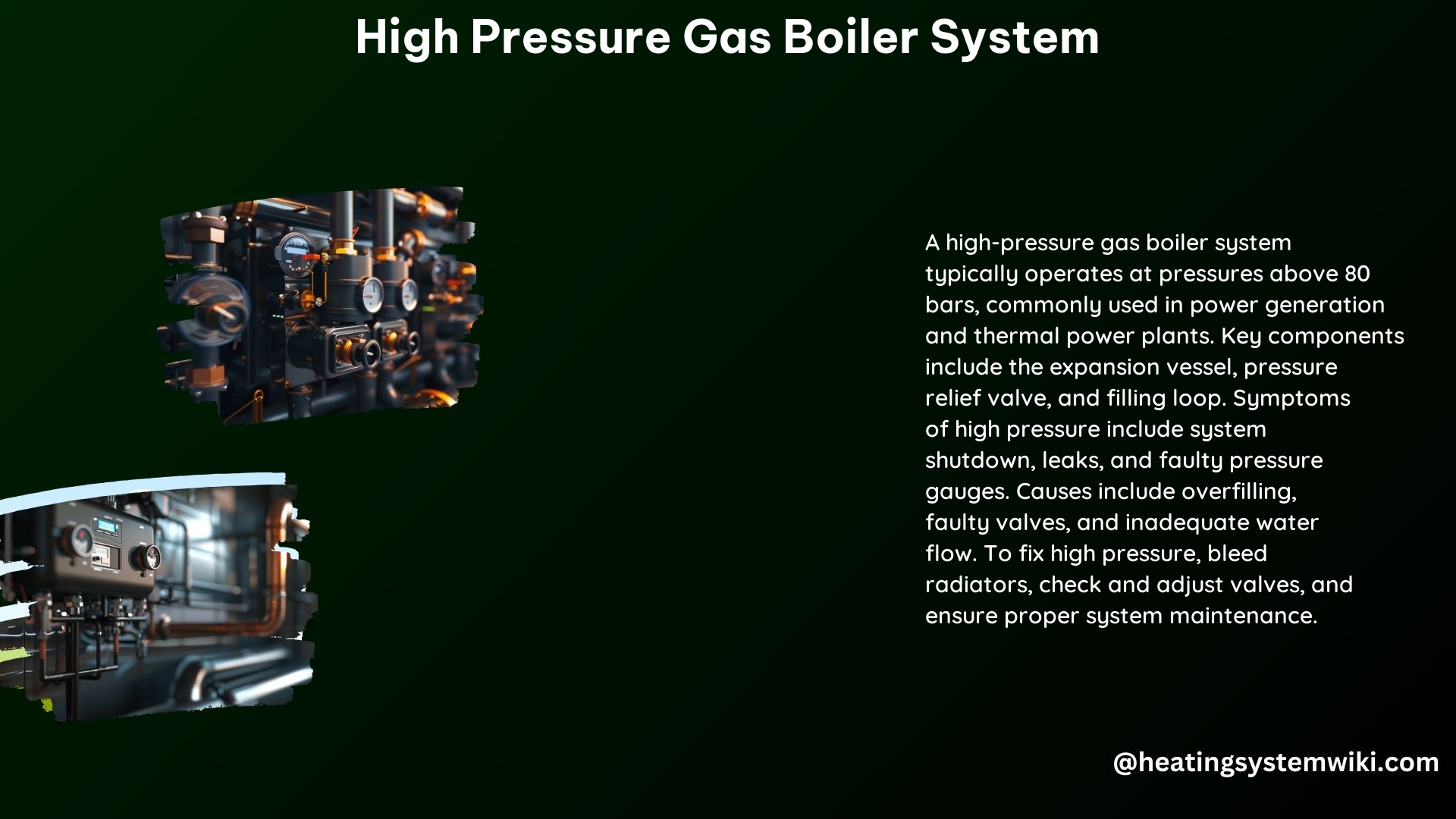High pressure gas boiler systems are a critical component in thermal power plants, responsible for generating the steam that drives turbines and produces electricity. These advanced boilers operate at pressures exceeding 80 bars, making them significantly more powerful and efficient than their low-pressure counterparts. In this comprehensive guide, we’ll delve into the intricate details of high pressure gas boiler systems, covering their key characteristics, technical specifications, common issues, and safety considerations.
Operating Pressure and Fuel Efficiency
The defining feature of high pressure gas boilers is their ability to operate at pressures above 80 bars, which is significantly higher than the 15-20 psi (1-1.4 bar) range of low-pressure boilers. This elevated pressure allows for more efficient steam generation, with the steam produced typically reaching pressures over 15 psi (1 bar) and water pressures exceeding 160 psig (11 bar).
In terms of fuel efficiency, high pressure gas boilers are designed to operate with a combustion efficiency ranging from 15 to 20% excess air. This means that the boiler’s fuel-to-steam conversion process is highly optimized, resulting in a thermal efficiency of around 95%. This level of efficiency is achieved through advanced combustion control systems, heat recovery mechanisms, and precise fuel-air mixture management.
Steam Generation and Boiler Types

The high-pressure steam generated by these boilers is typically in a wet or saturated state, meaning it contains a mixture of water vapor and liquid water. This steam is then used to power turbines and other equipment in the power plant, driving the generation of electricity.
There are several types of high pressure gas boilers, each with its own unique features and applications:
- Steam Generators: These boilers are designed to produce high-pressure steam directly from water, without the need for a separate steam drum.
- Electrical Boilers: These boilers use electric heating elements to generate steam, offering a clean and efficient alternative to fossil fuel-fired boilers.
- Vertical and Horizontal Boilers: The orientation of the boiler can affect its space requirements, accessibility, and performance characteristics.
- Gas, Water Tube, and Fire Tube Boilers: The choice of fuel and boiler design (water tube or fire tube) can impact the boiler’s efficiency, maintenance requirements, and suitability for specific applications.
Technical Specifications
High pressure gas boilers are engineered to meet demanding performance and safety standards. Here are some of the key technical specifications:
| Specification | Value |
|---|---|
| Operating Pressure | 80 bars or higher |
| Fuel Efficiency | 15 to 20% excess air |
| Thermal Efficiency | Approximately 95% |
| Steam Pressure | Over 15 psi (1 bar) |
| Water Pressure | Over 160 psig (11 bar) |
Common Issues and Solutions
Despite their advanced design, high pressure gas boilers can still experience various issues that require prompt attention and resolution. Some of the common problems and their solutions include:
High Boiler Pressure
Causes: Boiler age, faults, and malfunctions can lead to high boiler pressure.
Solutions: Inspect and replace faulty components, adjust valves, and ensure proper system maintenance.
Boiler Pressure Too High
Signs: Leakage from the central heating system.
Solutions: Open the filter valve, use a drain-off valve, bleed a radiator, or undo a radiator nut to release pressure.
Safety Considerations
Ensuring the safe operation of high pressure gas boilers is of paramount importance. These systems are equipped with a pressure relief valve that triggers if the pressure becomes too high, preventing dangerous overpressurization. However, it is crucial to regularly inspect and maintain the pressure relief valve to ensure it is functioning correctly.
Additionally, annual boiler services are essential to identify and address any potential issues before they escalate, minimizing the risk of costly and dangerous boiler faults.
References
- Boiler Central. (2024). Boiler Pressure Too High: Causes Of High Pressure & How to Fix. Retrieved from https://www.boilercentral.com/troubleshooting/7-reasons-why-your-boiler-pressure-is-too-high-or-low/
- Heating Help. (2018). Boiler pressure more than 20 psi. Retrieved from https://forum.heatinghelp.com/discussion/164637/boiler-pressure-more-than-20-psi
- IQS Directory. (n.d.). High Pressure Boiler: What is it? Types & Characteristics. Retrieved from https://www.iqsdirectory.com/articles/boiler/high-pressure-boiler.html
- Ideal Heating. (n.d.). Boiler Pressure Too High? Here’s How to Fix It. Retrieved from https://idealheating.com/tips-and-advice/boiler-pressure-too-high-heres-how-to-fix-it
- Terry Love. (2011). Boiler getting overpressurized — reaches 30 PSI and PRV releases. Retrieved from https://terrylove.com/forums/index.php
